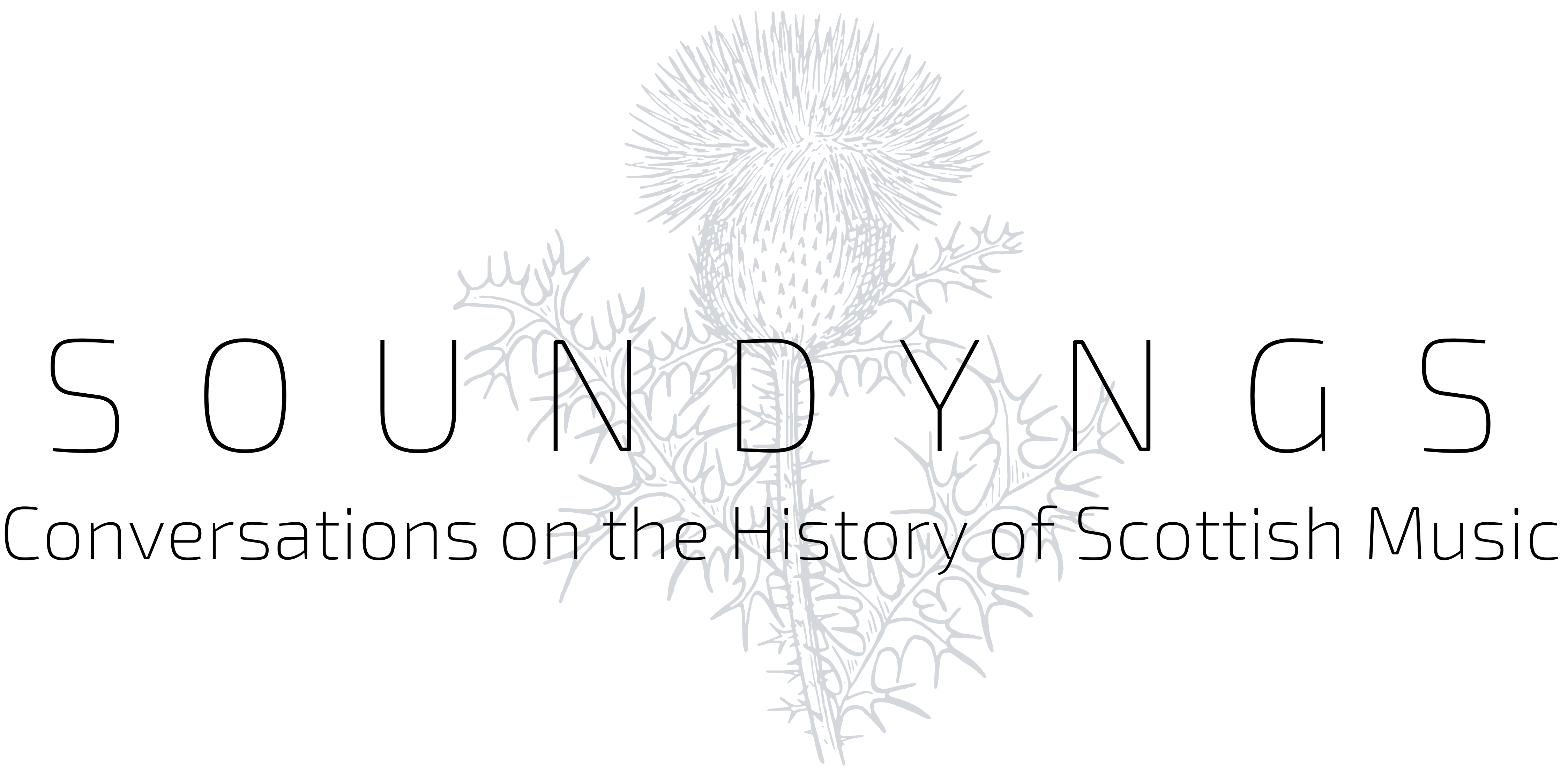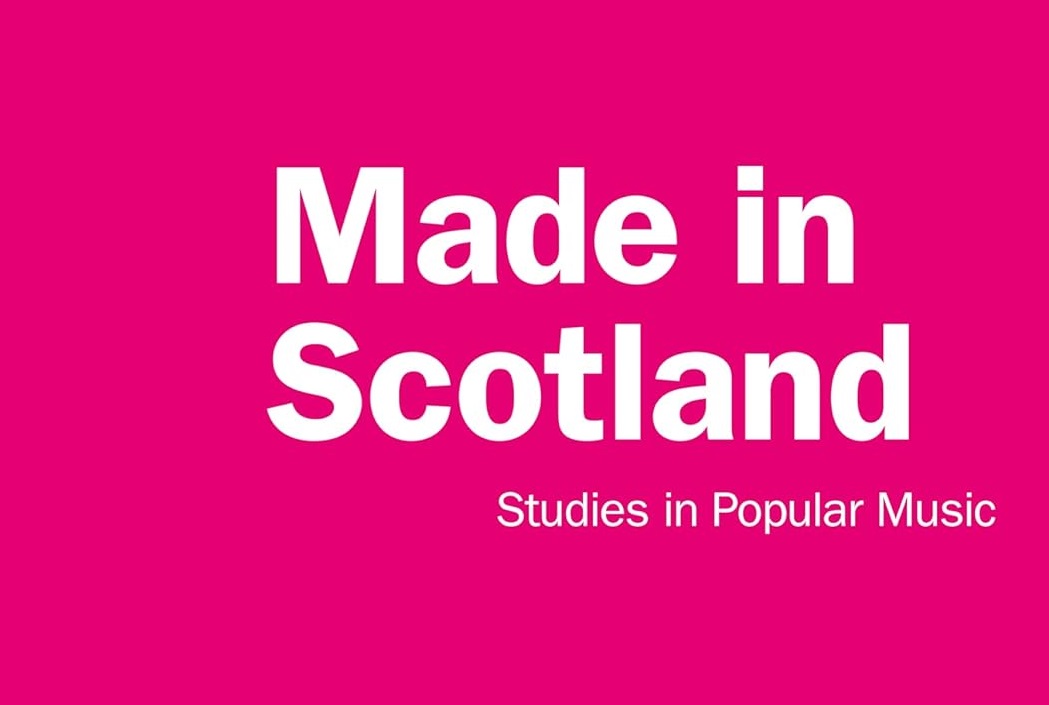History starts, I guess, “yesterday”, and this book pushes right at the threshold of what is “history” and what is history-making. Edited by Simon Frith, Martin Cloonan and John Williamson, this fascinating collection of essays from both academics, practitioners and cultural facilitators brings to life the ways that popular music is used by modern Scots to explore and perform a distinctive identity. The book is so modern it’s year of publication is actually “next year”, 2024; lucky me, reading it in December 2023.
The material is divided into 3 parts: ‘Histories’, ‘Politics and Policies’, and ‘Futures and Imaginings’. That last one, perhaps, reflects the famous Benedict Anderson definition of a nation as an ‘imagined community’: the history of these variously imagined futures explore a national identity experiencing rapid change: the editors also set out to track ways in which Scottish music is ‘simultaneously local, national and international’ (p.5).
The book’s preface includes a useful timeline of key dates from 1951 (Hamish Henderson’s establishment of the School of Scottish Studies in Edinburgh, and the ‘Scottish Folk Revival’) to 2022 (singer-songwriter Gerry Cinnamon performing at Hampden). Name checked performers and infrastructures in this section signpost the narrative that the wider book will relate: that performance culture has evolved alongside political movements and media infrastructures, mutually reinforcing changing ideas about Scottish identity in a small-country demographic where the contributions of individual people matter.
It’s also good to see that – in contrast with some other recent books on popular culture reviewed in Soundyngs – that author contributors here include (only/at least) two women (Carla Easton and Diljeet Kaur Bhachu), and also a conversation (if not a fully-authored piece) with Joy Dunlop on performing in Gaelic; within many essays there is also active consideration at last of female contributions to popular music and identity formation.
Histories (since 1955)
Individual essays in this section look at modern infrastructures (radio, television and record companies, venues and festivals) and case studies that reveal the opportunities and limiting factors afforded by these infrastructures (e.g. jazz, gender and music, Gaelic language).
Why does broadcasting media matter so much to contemporary identity? A, because it is how citizens of the modern world sees and understand themselves, and B, for the artists involved, national media profiling made it possible for them to get record contracts. The potential tension between the aspirational culturally idealising goals of area (A) and pragmatic entrepreneurialism of area (B) run like a persistent rumbling fault line through the entire collection of essays.
- In the introduction to this section, John Williamson discusses the role of the UK national broadcaster, the BBC, acknowledging its importance in shaping Scottish national self-image, while voicing reservations about the ways in which the BBC Charter led to a focus for many early decades on regional ‘specialties’ (folk/trad light entertainment). This, he argues, made it more difficult to programme contemporary kinds of popular music that might have been more widely representative of modern Scottish identity. The emergence of the ‘unlikely trio’ of Kenneth McKellar, Jimmy Shand and Andy Stewart as the first big Scottish TV stars (p.18) is offered as proof that artists on the air presented a limited view of mid-20th century popular music tastes, at least for younger Scottish people. STV is credited with bringing pressure to bear on those choices, bringing Scottish pop to the airwaves both through their own programming and by provoking the BBC to follow suit. The BBC’s Stramash! featured contemporary pop artists such as Lulu in the mid 1960s, with a particular profiling of those based in and around Glasgow, who might find it easy to get to the studio (the Glasgow focus of popular music infrastructure is another recurring theme of this book).
- John Williamson also contributes an essay, with participant interviews, on the Glasgow Riverside Festival and its place in the European calendar of rock festivals. The theme of acting locally but connecting globally is one that recurs in the collection.
- Bob Anderson’s essay on independent record labels makes a case for their importance from the 1960s for the emergence of Scottish bands and again, their reach not just in Scotland but further afield.
- Kenny Forbes, writing on live music gigs at large venues such as the Glasgow Apollo and later the SECC, and on festivals such as T-in-the-Park, demonstrates the contribution of these to the Scottish cultural economy, again making the connection with international tours and artists as well as their role in promoting home-grown talent.
- Alistair Braidwood’s chapter on jazz features short comments from jazz artists whose contributions again reach far beyond Scotland, who, inter alia, remark on the emergence of jazz in Scotland from post-war dance culture, and on the importance of jazz education initiatives that helped to develop the genre both locally and at the Royal Scottish Conservatoire.
- Carla Easton writes vividly about her own experiences of setting up girl-bands in Carluke and then, post-punk, during and after art school in Edinburgh, and the challenges faced by women in a world structured around male norms.
Weaving chronology with eyewitness interviews, essays here provide interesting examples of autoethnography making a strong contribution to our understanding of what it feels like to be in a particular cultural space that is both local and globally positioned.
Politics
Essays in this section mark a transition from history-telling to contemporary sociological constructivism. The history-telling component is strong, but alongside this a clear sense of authorial positionality and cultural critique.
- Martin Cloonan’s section introduction proposes – for any reader not already familiar with the peculiar situation of Scotland within the United Kingdom – that power struggles within the UK have a limiting impact on Scotland’s ‘small nation’ music-making capabilities, and implicitly the diverse ways that musicians can sing and play from inside and outside the boat of modern Scottish state politics.
- Initial essays highlight the strategic role of public infrastructure e.g. the alignment of local and national values in the contexts of both a grant-supported rock festival in rural Angus (Emil Thomson) and the larger-scale international Glasgow Jazz festival (Martin Cloonan in converstation with Jill Rodger), and the role of music education in promoting contemporary Scottish popular music (Sean McLauchlin and Graeme Smillie).
- As a hinge to singing from ‘outside the boat’, Martin Cloonan’s essay on ‘Jock Rock?’ expands his case that popular music connects local contemporary Scottish national identity with international music movements, thinking about Scottish habituated self-identification through music, historiographical narratives and gaps. While (I think) this is rather under-theorised (the fetishisation of ‘Scottish sounds’ in commodified music is something that would bear a bit more Baudrillardian deconstruction), Cloonan is on-point with his attention to vocalisation (accent) and gesture (clothes, attitudinal ‘dourness’) as part of a semiotics of (sometimes cultural-cringeworthy) Scottish cultural ‘performance’ (p.112).
- The following essays reflect resistance to governmental structures. Dave Hook, next up, is wonderful on hip-hop, which, in the Scottish context is a genre that crystallises many of the factors Cloonan flags as core to the performance of contemporary Scottish identity (adding in lexical choice to the mix), while being further connected to globally legible sub-cultural performances of resistance. Hook also notes that hip-hop traditionally reflected a ‘predominantly white, male, working-class experience, participants and voices’ (p.120), and flags up what is being done to close the gaps in a more diverse contemporary demographic. Adam Behr’s final essay in this section looks at explicitly ‘Indy’ music associated with the Independence referendum, acknowledging the ideological tension inherent in using music that benefited from public grant money (awarded to creative industries as ‘drivers of economic growth’ (p.129)) in the context of political protest and change-drive.
As a whole, this middle section shows popular music expressing the tension in modern political Scottish identity between identity-with and resistance-to state structures.
Futures and Imaginings
Simon Frith’s introduction to this section suggests ‘Scotland has always been an imaginative project’ (p.135), and muses on the ways in which literary imagination interacts with music. Modern popular music co-opts tradition to imagine different futures.
- Frith’s own essay looks at contemporary literary uses of music, citing well-known writers who are also musicians, and working through examples of real and fictional biographies that show Scottishness emerging from and expressed through music (this piece is a personal favourite of mine).
- Martin Cloonan (again) interview with folk-musician Alastair Roberts uses both autobiography and wider tradition-bearing practice to think about how contemporary folk music mobilises ideas of the past within modern popular music, bringing the ethnographic interview method into the current moment.
- Diljeet Bhachu wonders how Scotland’s growing population diversity will be accommodated in the unfolding narrative: if ‘voice’ is important to the performance of Scotland, there are new voices in the contemporary mix struggling to be heard, and this chapter shows how internationalism in the form of population mobility brings new challenges and opportunities.
As Frith puts it, ‘to be Scottish is to be unsettled’, in a constant state of tension, both by the uneasy relationship with the rest of the UK, by the ‘push and pull of leaving the country and staying’ (p.147) Music, and popular music in particular, helps modern Scots to navigate a path between ‘fatalism and exhilaration’.
Conclusion
Scotland may be unique with the UK, but it’s also a land where the difference between the urban central belt and the more sparsely populated countryside can generate particular local identities and differentials of often hidden rural deprivation, as Emil Thompson discusses in his essay on rural music scene in Angus (referencing related research by Simon McKerrell on the Scottish borders). There are moments when the tension between the dominant infrastructures in Glasgow and (to a lesser extent) Edinburgh are acknowledged, but I found myself wondering whether the book might do more to acknowledge these potential sources of regional diversity.
Like all interesting books, this one has strong opinions in it (“to be a popular music scholar in Scotland is necessarily to be engaged in music politics” p.9), and ultimately, for this topic, this punchiness is a strength in the writing. What emerges clearly from the various essays here is the tension between cultural identity and economic aspiration: musicians benefit materially from public policies that potentially can highlight their role as contributors within a strong national economy. Scottish pride in culture ‘making’ also has a fiercely entrepreneurial aspect. As a description of the affiliations of modern Scottish popular music, this is a persuasive and coherent collection of essays.
Further Reading
- Simon Frith, Martin Cloonan and John Williamson (eds.), Made in Scotland: Studies in Popular Music (London: Routledge, 2024)
- ‘Stramash!’ in Scotland on Air, https://wiki.scotlandonair.com/wiki/Stramash! accessed 4/12/23

